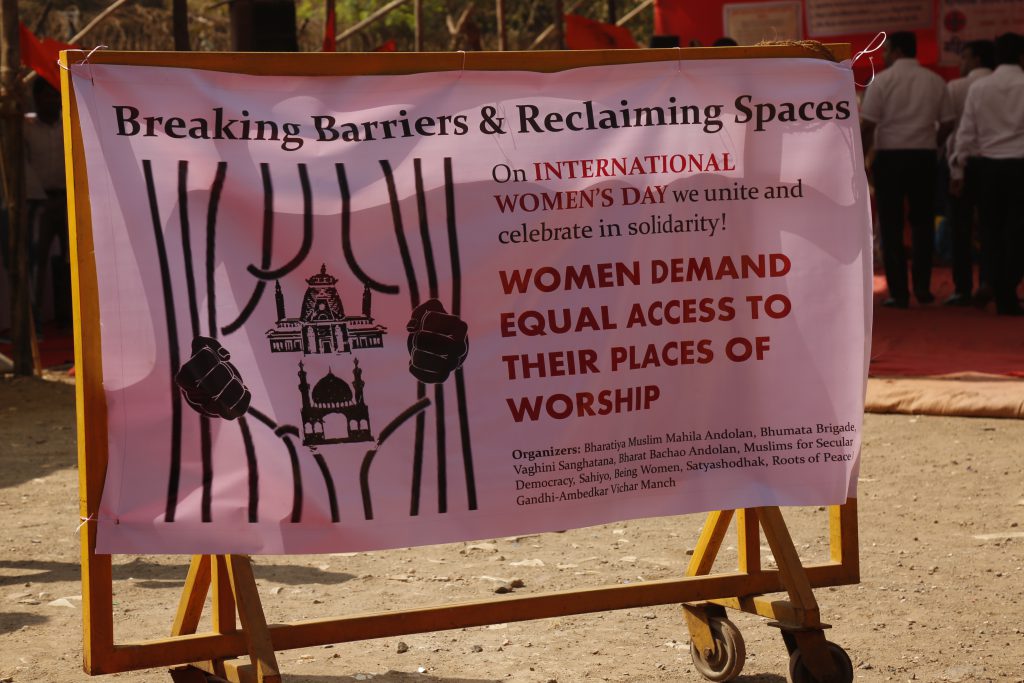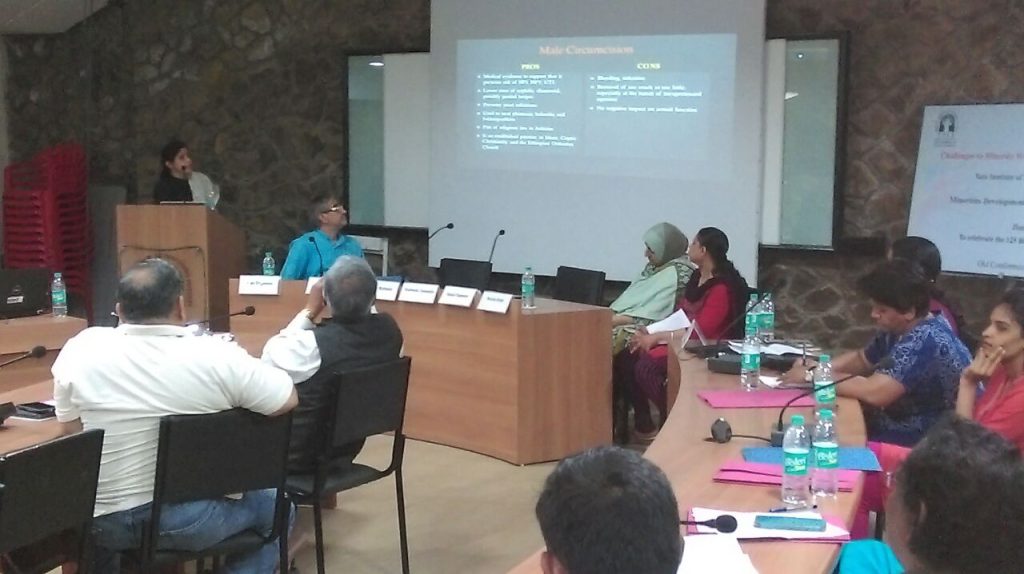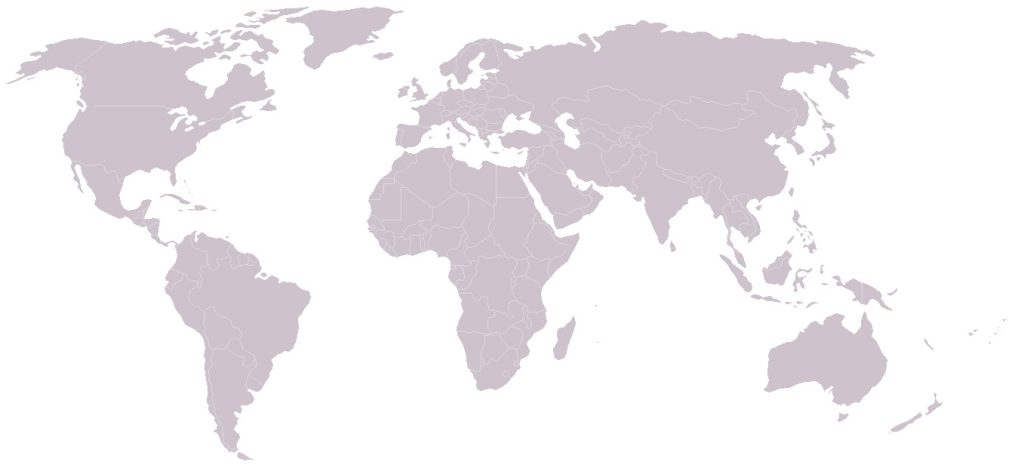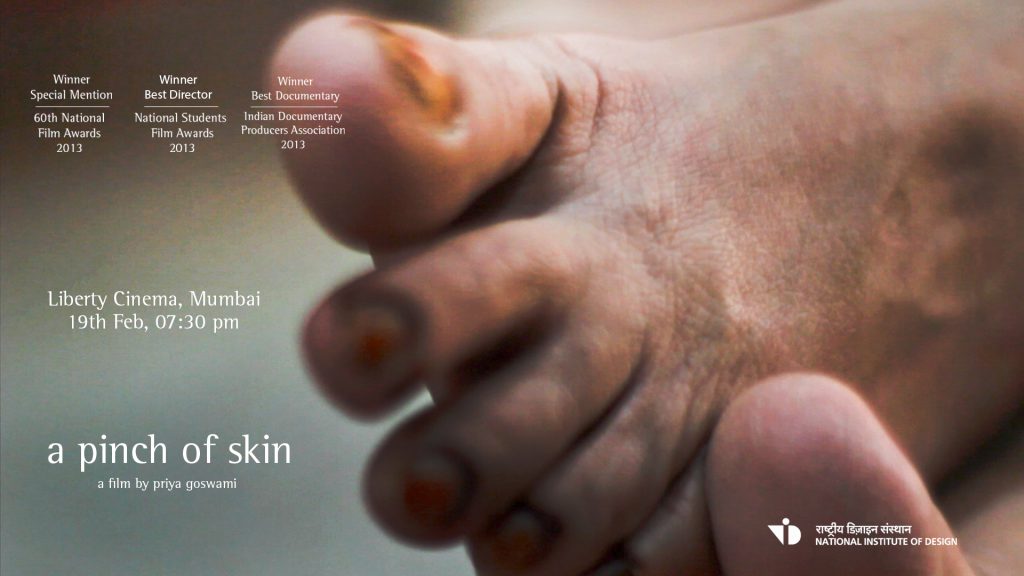Sahiyo at a unique Women’s Day event in Mumbai

Sahiyo Participates in “Challenges to Minority Women’s Rights and Development in Maharashtra” Roundtable.

Today, I Call Myself A SURVIVOR Of FGM

By Zarine Hashim Age: 36 Country: Melbourne, Australia The memory of the fateful day is very clear in my mind. It was a Saturday, and like every Saturday, mom, my older sis and I were headed to our grandparent’s home to spend the day there. I always eagerly awaited the weekend, as we always had so much fun there and got spoilt with yummy snacks, lollies and an occasional movie. This day was different! Upon reaching my grandparent’s home, I noticed my gran was ready to leave for somewhere she had to be. She said to me that she was going to see her friends and I could come along. I was quite excited about the outing. Little did I realize that this would be a trip I would want to forget about! We walked into the bohra mohalla in Pune and went up a flight of stairs of a very dingy looking apartment building. We were greeted by a woman at the door who ushered us into the house. On entering the room, I noticed two other women sitting on a carpet laid out. One of the women asked me to take my undies off and lay on the floor. I was very confused and looked at my grandmother who said it was ok and I should do as I was told. So I did and as soon as I laid down, one of the ladies spread my legs and pinned them and the other two pinned my arms above my head. I remember fighting to get free but they were too strong for me. Then I felt this sharp pain and screamed in agony. It was all over quickly, but it felt like a very long time. I was very scared and closed my eyes. The lady then wrapped a gauze like bandage around my private parts, almost like a nappy and I was instructed not to mention this to anyone. The other lady said, ‘You’re going to get a new underwear’, and I remember thinking that I just wanted to go home to my mom. This is how vividly I remember the fateful day, but until I signed a petition to stop this practice four years ago, all this was a suppressed memory, buried away! I’m not sure how it has affected me physically, but it sure has affected me on a mental level. I still shudder every time I talk, think, or read about FGM and tears just roll out. I felt cheated. But today I call myself a survivor and not a victim. I feel empowered by being a part of a group of very strong, brave and driven women and together we are fighting to see an end to this barbaric practice. I have a two year old daughter and I am very blessed to have her in my life and as a symbolic representation of my endurance and perseverance.
They would call the “bhoot” if I didn’t stop screaming

(Trigger Warning: Below is the account of one woman’s experience with FGC. We thank her for being brave and sharing her story with us.) By Fatema Kabira Age: 19 Country: India Seven years old. I was seven years old when they forced me to have a part of my femininity cut off. I don’t remember much from my childhood. My memories are very vague. Yet, despite my poor memory, I clearly remember the day I was circumcised. That day is a vivid memory. My grandmother and mom told me I was going for a sitabi (a celebration for women and girls). I used to love sitabis when I was a kid. So, I got really excited and eagerly awaited going to the sitabi. I even insisted to my mom that I wear my new clothes and topi. After dressing up in my favourite clothes, I left with my grandmother and mom to go to the sitabi. We didn’t end up attending any sitabi and instead we went to a place that was unfamiliar to me. It was an old looking building. The steps were covered with dust and were broken. I was confused why we were there. We went inside somebody’s house and were greeted by a middle-aged woman whom I failed to recognize. I asked my mom what was going on, but she ignored me. The house was small with only one room, kitchen, and a storage unit attached to the ceiling. The one room was dim and gloomy and gave out an eerie feeling. The Aunty chatted with us for a while and then went inside another room to bring something back. When she came out she had a blade and 2 or 3 other items in her hands (I can’t recall what they were). She came and sat in front of me. My mind went blank. I thought, ‘Blade?’ ‘For what?’ My grandmother then asked me to remove my pants. Innocently, I told them I did not want to use their washroom. My 7 years old brain could not comprehend any other reason why my grandmother would ask me to remove my pants. And that too in front of an unknown woman since my grandmother knows how shy I was even in front of my own mother. But I obliged to my grandmother’s request. They made me lie down and held my hands firmly to the ground. Next thing I remember is the sight of the silver blade and a sharp agonizing pain in my most intimate area. I screamed in terror. What did they do? The Aunty told me to keep quiet or she will call the “bhoot” (ghost) that stayed in her storage unit. I didn’t oblige to them this time. I screamed and yelled and tried to free myself. It was all in vain. They did what they wanted to do. It was all over. I cried all the way home. It hurt every time I urinated. The sight of the blood made me sick. I was hurt and angry and confronted my mother about this. She told me she was under religious obligation and she did what thought was the right thing to do at that time. Fortunately, I didn’t face any medical repercussions due to the unhygienic and brutal way in which I was circumcised. But it has left a psychological impact on me. I feel disgusted, ashamed, and angry at what has been done to me. There is no reason that justifies this barbaric practice. There is no reason that justifies taking away women’s inherent physical rights and ability to experience pleasure. Young girls are scarred for life and this needs to be stopped.
I Will Not Be Silent – Ban Khatna Globally

Zehra Patwa Age: 45 Current Country of Residence: United States In 2014, I saw a video that changed my life. My husband sat me down, told me that this was going to be upsetting and showed me a video. It was a documentary from Australia featuring my cousin’s wife recounting her experience of being cut at the age of 7 in a dingy apartment in India by an old woman. Her telling of the story horrified me, which is the same reaction I have always had about Female Genital Mutilation (FGM) but what threw me was the fact that this was a Bohra woman, like me. She said this happens to all Bohra girls around the age of 7 and that it had happened to her sister, too. For a moment, I refused to believe it but as she kept talking, I realized that it could have been done to me too. I grew up in the UK and moved to the US in 1994. I immediately recalled that summer trip to India at the tender age of 7 to attend my uncle’s wedding. My mother had made me new dresses and I had matching hats and headpieces to go with them. It was going to be so much fun. What I couldn’t recall, though, was the actual khatna, but I have since received confirmation from my family that it was done to me. Even then, the reality did not sink in. How could I not remember it? Maybe it wasn’t done to me after all, maybe it was all a ruse to “save face”. What I’ve learned since is that some women erase the memory of the traumatic event completely and utterly. Sometimes, it can be restored and other times it can’t. I still haven’t accepted if it’s better to know or to not know. Either way, it feels like a violation. I cannot stand by quietly and let other girls in our Bohra community be subjected to this terrible practice. I will not be silent. Even though I do not recall my personal khatna, I feel lasting psychological damage has been done just knowing that it happened to me. I can only imagine the physical and psychological damage done to those girls and women who, to this day, have vivid memories of it. The Bohra jamaats in Sydney and Melbourne in Australia and, now, London in the UK have banned khatna (khafd). Why do our sisters from all over the Bohra diaspora still have to suffer when our sisters in Australia and London are spared? Are Bohra women valued more in some countries than others? All Bohra women are subject to the same rules and edicts from Aqa Maula, why is this any different? Khatna is illegal under Female Genital Mutilation laws in the US (18 U.S. Code § 116 – Female genital mutilation but if khatna should not be done by some Bohras, shouldn’t it be extended to all Bohras regardless of the law in that country? If you had a daughter in Dubai, would you still consider subjecting them to khatna if your sisters in Australia and the UK are specifically told not to?
To cut or not to cut? 10 Bohra stories to set off a debate on khatna

By Chandni Shiyal, PhD Student, Mumbai University I first found out that female genital cutting is practiced among Dawoodi Bohras in India during my M.Phil research on FGM in Africa. I was shocked when my Bohra friends not only confirmed they had undergone the practice but also seemed absolutely fine with it. I began to talk to more and more Bohras about it – my friends, their relatives, even strangers I met on the train. Most of them seemed to support the practice; some told me they had been cut but did not know what exactly was done; others said they must maintain silence about it because of the pressures of society. Here are some of the stories that emerged from a series of informal interviews I conducted with Bohra women in the past few years: She was circumcised at age seven. The practice, she says, started at the time of Mohammed Rasoolullah. It is done to curb sexual desire, so that the woman remains within her “limits”. She never discussed this subject with her sisters till they were all married. Even though times have changed, many new-generation Bohras continue the practice under family pressure, because their parents claim it is farziyat (obligatory) in the religion. But today she wants to fight the practice. She was cut at seven, when her mother took her to an “aunt’s” place. The pain lasted for three days. There are no “side-effects” to the practice, she says, but it is done to reduce sexual desire. Her daughter is now three years old, but her mother-in-law already keeps reminding her that the girl needs to be cut. She doesn’t support the practice now, but she knows she will have to give in to family pressure and eventually circumcise her daughter. She is 45. The practice, she says, involves spreading a girl’s legs and cutting. The pain is horrible. They apply some cream. The girl is told to avoid playing and jumping. She is given coconut water to recover and is told to avoid putting water on that part for a few days, and apply Dettol for hygiene. But it takes time to heal. It is done at a young age, she says, to avoid any questions or opposition. The practice is done with the consent of Maula, the community leader. People are told, “If you do not do this, you are not a Bohra”. She tells me the practice began at the time of the Prophet. Even though the Quran doesn’t mention it, one must follow the Nabi. It is a matter of faith. What the Africans do is quite harsh and backward, but what we do, she says, is a milder form that causes no harm. The practice, she says, involves removing the extra “haraam” flesh above the “urine part”, just like one would remove a cancer. Cutting reduces sexual pleasure, she says, and when the woman marries, she is able to give her husband pleasure. When a girl is circumcised, it beautifies her vagina – “Ek nikhaar aati hai”. She believes girls who are not cut possibly undergo menstrual and gynaecological problems. I mention that other Muslims in India do not practice female circumcision, to which she says, “We perceive the Quran differently; we are the Brahmins of Islam.” She was circumcised at the age of seven. She doesn’t remember what exactly happened, but knows it is done to reduce a woman’s sexual desire. She believes the cutting is for her betterment. She does not really feel the need to go against the practice and admits she would have her daughter circumcised, albeit unwillingly. But if she gets confirmation that the Quran makes no mention of female circumcision, she would try her best not to let her daughter be cut. It is possible, she says that women who are not circumcised probably feel more sexual pleasure than those who are cut. She was cut at seven and did the same for her daughter, but was a bit scared about it. It is difficult, after all, to prepare a young child for something like this. Recently, her friend from the Jain community married a Bohra boy, and she had to undergo circumcision. She was told that her nikah would not be valid if she was not cut. She was cut when she was three months old. She believes male circumcision is harsher than female circumcision, because boys need a surgical procedure, while a girl’s clitoris can be cut even with a fingernail. The main reason behind the practice, she says, is because men in the community often work outside the country for months, and khatna helps control sexual desire. She believes khatna is a part of the religion and is fine with it. She belongs to a modern family, she says, and was given the freedom to live a life of her choice. For instance, she freely interacts with her male friends. Then she says, “If my mother had even once told me about khatna or asked me if I wanted it done, I would have refused. What hurts me is that it was done without my consent.” Nonetheless, she says she would circumcise her daughter if she had one, because there is a scientific reason behind it. It maintains good sexual pleasure and prevents sexually-related diseases. Besides, at madrasa she learnt that if parents do not get khatna done for their daughters, it would count as a sin on their part. She recently had her daughter circumcised in Dubai. There, only Bohra doctors in hospitals perform circumcision on girls, and she was charged around Rs 1,300. There are no side-effects, she says, but it pains for two days. She believes she is a modern woman – she does not force her daughter to wear the rida and would never discriminate between a son and daughter. “But when it comes to religion,” she says, “I follow it strictly. I feel I am because of my community and if I don’t follow my religion,
Come See A Pinch of Skin – A film by Priya Goswami

In 2012, Sahiyo Cofounder, Priya Goswami released the documentary, “A Pinch of Skin”, which has become a national award-winning documentary on female genital mutilation, in India. A Pinch Of Skin will be screening in Mumbai on 19th Feb at 7.30 PM at Liberty Cinemas. This screening is organised by Osianama (part of the Oisan’s Film Festival) and they are holding a month long screening on the theme of Womanhood.
Stop female circumcision, Dawoodi Bohra authorities tell community members in Australia

(Article originally posted in Scroll.in on Feb 11, 2016) By Aarefa Johari Three months after a group of Dawoodi Bohras was held guilty for female genital mutilation in a landmark verdict by an Australian court, community authorities have issued a notice to all Bohras in Australia asking them to obey the law of the land and stop the practice of khatna or female circumcision. The notice has drawn cheers from Bohra activists campaigning to bring an end to the ancient ritual of female genital mutilation that is meant to moderate a woman’s sexual urges. In November 2015, the Supreme Court of New South Wales found a Bohra mother, a retired nurse and a senior clergy member called Shabbir Vaziri guilty of carrying out genital cutting on two minor sisters between 2010 and 2012, when the girls were six and seven years old respectively. The three people could face a maximum penalty of seven years in prison. Hearings to determine the quantum of punishment began on February 5 and are expected to go on for a while. The Bohra ritual of khatna involves snipping off the tip of a young girl’s clitoris, which is defined by the World Health Organisation as Type I FGM. Even though female genital mutilation has been illegal in Australia since 1997, the Bohra case is the first to actually make it to the nation’s courtrooms. It is also the first instance of anyone being arrested for khatna in the Dawoodi Bohra Muslim community, whose members predominantly hail from Gujarat in India. The Bohras are the only community known to practice female genital cutting in India, and so far, many have continued to cut their girls even when they migrate to other countries where female genital mutilation is illegal. The notice issued to Australian community members on February 9, however, could significantly alter this trend. Obey the law of the land The notice, emailed to all Australian Bohras in the form a resolution letter, came a day after the Anjuman-e-Burhani (Sydney) – a trust managing Bohra affairs in Australia – held a meeting to discuss khatna. The letter begins by quoting a hadith (text comprising the teachings of Prophet Mohammed) which states that “love for the land of abode is part of faith”, making it part of Islamic tradition to “remain loyal to the country of abode and to be law abiding and contributory citizens”. The letter goes on to state: [blockquote]“Khafd (also known as khatna or female circumcision) has recently been interpreted by the Supreme Court of NSW to be within the meaning of Female Genital Mutilation (FGM) as defined in section 45 of the Crimes Act of NSW. It is likely that the practice will be interpreted to fall within the specific laws in relation to FGM in other states or territories of the Commonwealth of Australia. Consequently, khafd is illegal, whether it is carried out within any of the states of Australia or overseas. All parents and guardians are hereby directed in the strictest terms not to carry out khafd under any circumstances. You are further instructed not to take any person out of Australia for the purpose of khafd.”[/blockquote] If the community follows the instructions of this notice, it would mean that Bohra girls in Australia will henceforth escape a painful ritual that has been practiced in the community for centuries. It could also mean that Bohra authorities might issue similar notices in other countries where female genital mutilation is illegal, including the US, UK and Canada. No law in India yet The notice has come at a time when a judge presiding over the female genital mutilation case pointed out, during a sentencing hearing on February 5, that the convicted mother and retired nurse have not expressed any remorse about performing genital cutting on the girls. They have not, he said, made any statement indicating that they now reject the practice or would be willing to speak out against it in their community. The notice could also be seen as a reaction to the growing negative media attention to the practice of khatna among Bohras in the past year, as more and more women from the community have come forward to demand an end to the erstwhile secret ritual. In December, 17 Bohra women from around the world (disclosure: this reporter is among them) launched an online petition asking the Indian government to act against female genital cutting, which is not yet illegal in India. The petition has garnered more than 44,000 signatures so far. ‘A small victory’ Community members, particularly those in Australia, have welcomed the notice and are now eager to see the rest of the Bohra population around the world follow suit. Zarine Hashim, a hospital administrator from Melbourne, reacted to the notice with a mix of emotions. “I felt happiness and elation as it was a small victory in the whole scheme of things, but also anger that it has taken a court case to make this happen,” said Hashim. “I really feel that the community, worldwide, needs to take this as an example and reassess the legal, physical and mental health consequences of the practice before performing it.” To read the original article, click here.
If jannat lies at the foot of my mother, why did khatna happen to me?

(Trigger Warning: The story here is another woman’s experience of FGC. We thank her for being brave enough to share it with us.) By Insiya Lokhandwala Age: 33 Country: Mumbai, India I remember going to Pune for vacation when I was seven. Once there, my eldest masi (aunt) took me to a building where there was an old woman who asked me to lay down and open my legs. I remember being scared. Then I saw a razor in her hand and I screamed at her to let me go. My aunt and mom pinned me down on the ground and said, “It will be over in a minute”. I remember the unbearable pain and then the old woman bandaged me down there and told me that I would be OK in a day or two. On our way home my aunt bought me a balloon and ice cream. She told me not to mention what had to me to my brothers who were around my age. Honestly, I have hated balloons since then and I don’t think I can forgive what they did to me. No religion in the world can ask mothers to put their little girls through this pain. I wonder how so many mothers can do this to their own girl children. No matter the consequences of what might happen to me for telling my story, this practice must be stopped. The practice was a way of controlling women in ancient times. I think our community has advanced enough to know what’s right and what’s wrong. Khatna is wrong. What happened to me can’t be undone, but we can stop this from happening to future girls. Let our children be children without trauma. Don’t tarnish their childhood memories by having girls undergo unforgiving situations. They say jannat lies at the foot of a mother, but if this practice continues, no child will be able to trust in this saying.
Now, a petition against khatna by UK Bohra woman

Voices against the practice of female genital cutting in the Bohra community seem to be getting louder and more numerous. The latest to speak out is an anonymous Bohra woman from the United Kingdom who was subjected to khatna as a child and remembers it as a traumatic incident. She has now launched a petition under the pseudonym “Luv Shabbir”, asking Nicky Morgan, a Member of Parliament in the UK, to do more to stop Female Genital Mutilation (FGM) in the Bohra community. This is the third online petition started by women from within the community to demand a ban on khatna for girls. The first was by the anonymous ‘Tasleem’ in 2011; the second, ongoing petition by 17 women from ‘Speak Out on FGM’ has already gained almost 30,000 supporters. Both these petitions emerged from India, where there is no law against female genital cutting and where Bohras are the only known group following the practice. In the United Kingdom, where several expat communities from Africa, the Middle-East and Asia follow various forms of FGC, the practice has been illegal since 1985. In recent years, the British government ahs been making concerted efforts to crack down on the practice. In this context, this latest petition by “Luv Shabbir” is indicative of two things: One, there is a growing desire among Bohra women to break the silence around khatna and speak out against it. Two, even in countries where there are laws against FGC, we have a long way to go before the practice meets its end. To support the UK petition, sign here.
